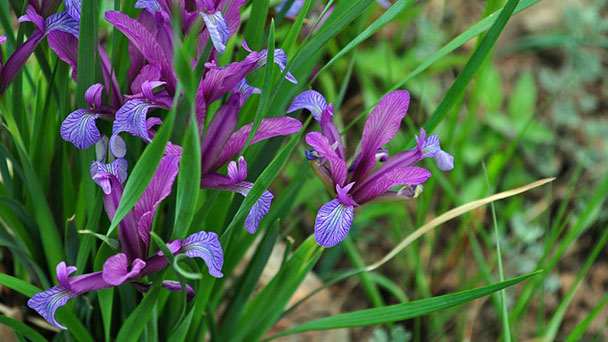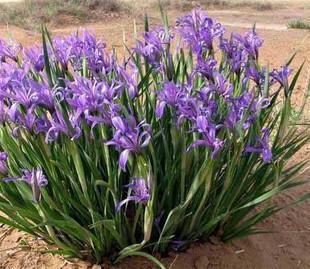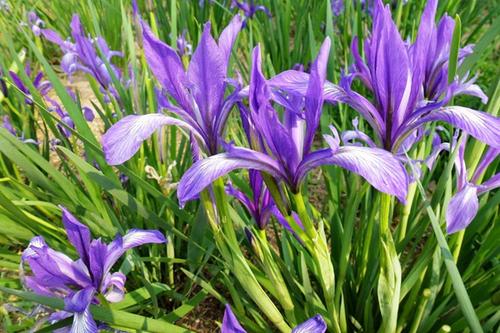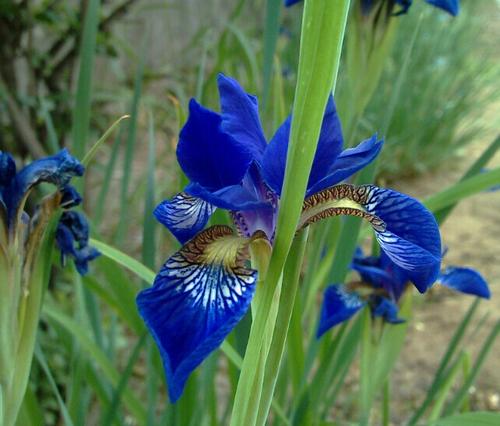The breeding methods and precautions of Iris lactea var. chinensis
Written by Maggie
Aug 24 2021

In breeding Iris lactea var. chinensis, we can select to cultivate with the soil mixed with some bone meal and river sand. In the early engraftment, exert a thin compound fertilizer every 10 days or so, and in the growth period, fertilizer under once a month. It should not be too frequent watering, often keep the state of the soil slightly dry, and need to get to the pest prevention.
Iris lactea var. chinensis picture

Breeding method of Iris lactea Var. chinensis
1. Soil requirements
Soil is Iris lactea var. chinensis one of the breeding methods and matters needing attention. iris lactea var. chinensis’s soil adaptability is very good. We can directly plant Iris lactea var. chinensis in the vegetable garden. Remember to remove the weeds in the soil before planting. Potted plants can blend some peat soil and bone powder mixture stirring, to ensure that the growth of root system growth.
2. Apply fertilizer rationally
Iris lactea var. chinensis prefers to grow in a nutrient-rich substrate. In the early stage of colonization, thin compound fertilizer should be applied every 10 days or so, and topdressing of mature organic manure should be done once every February.
3, suitable for water
In the seedling stage of Iris lactea var. chinensis, water should be strictly controlled, and watering should not be too frequent, and the soil should be kept in a slightly dry state. In the beginning of spring, water can be poured once and permeable; in summer, when the temperature is relatively high, watering quantity should be increased 1-2 times a week; in winter, water should be poured once and the soil should be kept dry.
4. Pest prevention
Iris lactea var. chinensis has a certain ability to resist diseases and insects, and it is easy for Iris lactea var. chinensis to be invaded by small ground tigers when hungry in the growing season. At this time, we can use 5% phosphorus octanoate particles to be buried in the soil, and pay attention to ventilation after watering, timely cut off the leaves of the disease at the onset of the disease, and conduct disinfection frequently.

Notes for the cultivation of Iris lactea var. chinensis
After picking, Iris lactea var. chinensis, it will lose its original tissue structure. Therefore, nitrogen fertilizer must be applied timely at this time to ensure its adequate nutritional requirements.

Latest Updated
- Benefits of Bugleweed - 7 Science-backed Health Benefits
- Bugleweed Dangers & Side Effects - Is It Poisonous?
- How to Plant Evergreen Trees - What You Should Know
- When to Plant Evergreens - Grow Guide for Evergreen Trees
- 12 Wonderful Evergreen Shrubs for Your Garden
- 12 Popular Evergreen Plants with Pictures for Beginners
- When And How To Prune A Lilac Bush Like a Pro
- How to Grow & Care for Lilac Vine (Hardenbergia Violacea)
- Japanese Lilac Tree (Syringa Reticulata) Care & Propagation Guide
- Shumard Oak Pros and Cons - What to Know
Popular Articles
- Winter maintenance of Antirrhinum Majus
- How to Grow Terminalia Mantaly Tree
- How to Grow and Care for Crossostephium Chinense
- How to grow Antirrhinum Majus in spring
- Peristeria Elata (Dove Orchid) Profile: Info & Care Guide
- Underwatered Snake Plant (Sansevieria Trifasciata) - Signs And How To Fix
- How to Care for Brazilian Jasmine Plant (Mandevilla Sanderi)
- How to Grow & Care for Graptopetalum Purple Delight in Summer
- Rosa Chinensis (China Rose): Plant Growing & Care Tips
- How to Care for Baby Sun Rose (Aptenia Cordifolia)